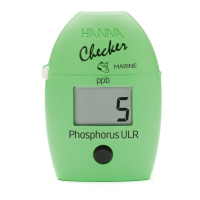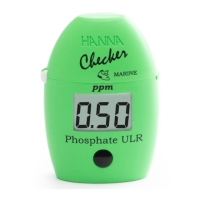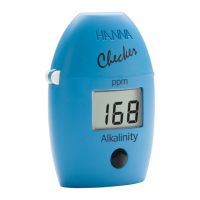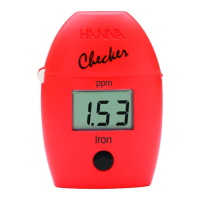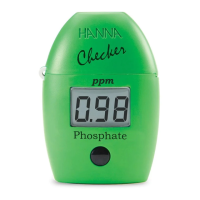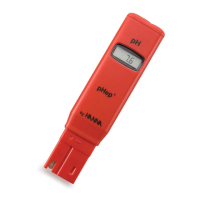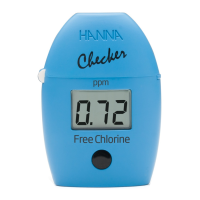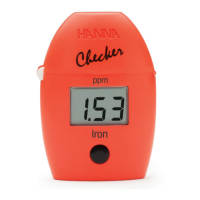11
(a)
(b)
(c)
• It is important that the sample does not contain any debris. This
would corrupt the readings.
• Do not let the reacted sample stand too long after reagent is
added, or accuracy will be lost.
• In order to avoid reagent leaking and to obtain
more accurate measurements, it is recommended to
close the cuvet first with the supplied HDPE plastic
stopper and then with the black cap.
• Each time the cuvet is used, the cap must be
tightened to the same degree.
• Whenever the cuvet is placed into
the measurement cell, it must be
dry outside, and completely free of
fingerprints, oil or dirt. Wipe it
thoroughly with HI 731318 or a
lint-free cloth prior to insertion.
• It is possible to take multiple read-
ings in a row, but it is recommended
to take a new zero reading for each sample and to use the same
cuvet for zeroing and measurement.
• It is important to discard the sample immediately after the
reading is taken because the glass might become permanently
stained.
• All the reaction times reported in this manual are referred to 20°C
(68°F). As a general rule of thumb, they should be doubled at
10°C (50°F) and halved at 30°C (86°F).
• Proper use of the powder reagent packet:
(a) use scissors to open the powder packet;
(b) push the edges of the packet to form a spout;
(c) pour out the content of the packet.

